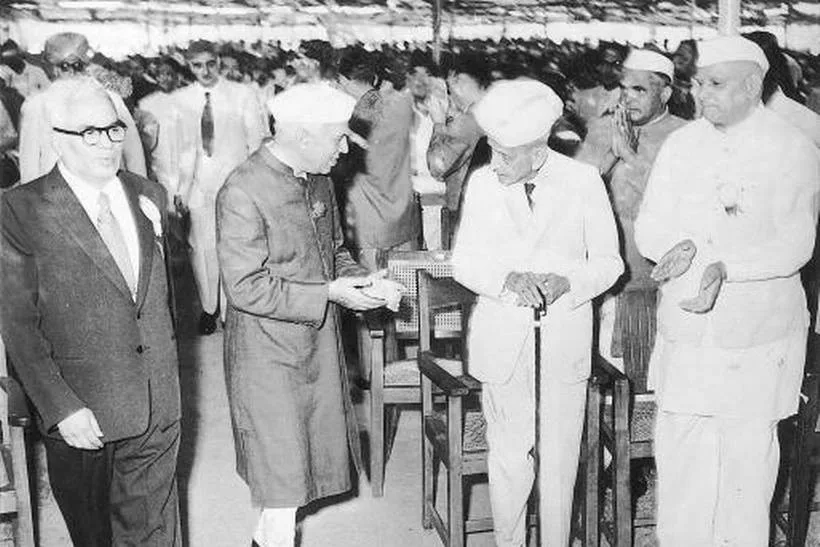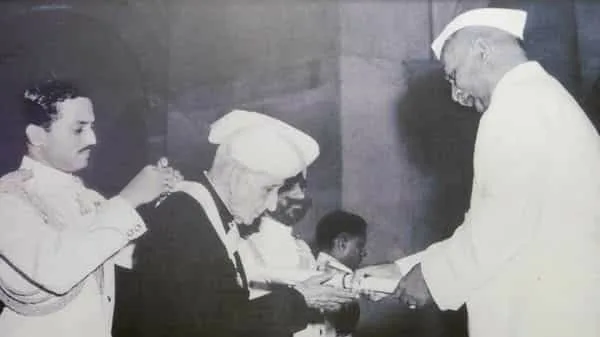Every year, on September 15th, India celebrates Engineers’ Day with great enthusiasm and pride. This date marks the birth anniversary of one of India’s most revered engineers, Sir M. Visvesvaraya. It’s a day dedicated to honouring the immense contributions of engineers to the nation’s growth, development, and progress. Referred to as the Father of Indian Engineering, his name resonates not only within engineering circles but also in the hearts of millions who have witnessed the transformation of modern India. Born on September 15, 1860, in Muddenahalli, Karnataka, Sir. M. Visvesvaraya was a visionary, an engineer par excellence, and a nation-builder. This article pays homage to the life, achievements, and enduring legacy of the man who played a pivotal role in shaping India’s progress through his unparalleled contributions in the field of engineering and beyond.
He went on to pursue civil engineering at the College of Engineering in Pune (then known as the Poona College of Engineering).
To know more about his early life, check out- https://constrofacilitator.com/sir-mv-knight-commander-of-the-indian-empire/
An engineer with focus on modern ideas
Sir M. Visvesvaraya’s lifelong focus on modern ideas and principles was a driving force behind his remarkable contributions to engineering, governance, and nation-building. He firmly believed that embracing the latest technological advancements was essential for a country’s progress. His innovative approach to engineering projects, such as the Krishna Raja Sagara Dam, showcased his commitment to modern engineering techniques and problem-solving. Visvesvaraya’s emphasis on efficiency, productivity, and innovation in infrastructure development left an indelible mark on India’s engineering landscape, setting new standards for modern engineering practices.
Moreover, his vision extended beyond engineering. As a statesman, he advocated for governance reforms rooted in modern principles of administration. During his tenure as the Diwan of Mysore, he introduced progressive reforms in education, industrial development, and public works, setting the stage for the region’s modernization. Visvesvaraya’s enduring legacy lies in his unwavering dedication to modern ideas, which continue to inspire generations of engineers, administrators, and leaders in India, emphasising the importance of innovation and forward-thinking in the path to development.

Diwan of Mysore
Sir M. Visvesvaraya’s tenure as the Diwan of Mysore is celebrated as a transformative era in the history of the princely state. Appointed to this crucial role in 1912, Visvesvaraya brought his engineering brilliance and progressive vision to governance. His most enduring legacy lies in infrastructure development, notably the construction of the Krishna Raja Sagara Dam, a feat of engineering that revolutionised irrigation and agriculture in the region. Under his leadership, Mysore witnessed remarkable advancements in education, industrialization, and economic self-sufficiency, setting it on a path of modernization that continues to benefit the state to this day.
Visvesvaraya’s role as the Diwan of Mysore also underscored the importance of visionary leadership in driving socio-economic progress. His commitment to education and innovation left an indelible mark on the region and served as a model for the rest of India. His legacy as both an engineer and a statesman continues to inspire generations, highlighting the immense potential of leadership when guided by principles of modernization and development.
His legacy and contribution
Sir M. Visvesvaraya was known for his exemplary role in technical projects and his distinct perspective on work, which emphasised efficiency, innovation, and meticulous planning. Here’s a closer look at his role in technical projects and his work philosophy:
1. Krishna Raja Sagara Dam:
The Krishna Raja Sagara Dam, located in Mandya district of Karnataka, is one of the largest and most iconic dams in India. Sir M. Visvesvaraya, during his tenure as the Diwan of Mysore from 1912 to 1918, played a crucial role in conceptualizing, planning, and overseeing the construction of this mammoth project. The dam, built across the River Kaveri, was designed to address the region’s irrigation and water supply needs. It involved innovative engineering techniques, including the use of automatic sluice gates designed by Visvesvaraya himself. The dam’s completion in 1931 transformed agriculture in the region, providing a reliable water source for irrigation and enabling multiple cropping seasons. This contributed significantly to the agricultural and economic prosperity of the Mysore State.

2. Automatic Gates Patented:
Sir M. Visvesvaraya’s genius extended to inventing automatic sluice gates used in the Krishna Raja Sagara Dam. These gates allowed for the automatic regulation of water flow, improving the efficiency of the dam’s operation and water management. Visvesvaraya patented this innovative technology, which became an integral part of the dam’s infrastructure. His automatic gates ensured precise control over water release, preventing floods during heavy rainfall and facilitating controlled irrigation during dry periods. This invention demonstrated his commitment to incorporating modern engineering solutions into large-scale infrastructure projects.

3. Iron and Steel Work at Bhadravathi:
Visvesvaraya’s influence extended to industrial development as well. He played a significant role in the establishment of the Bhadravathi Iron and Steel Works in Karnataka. This initiative aimed to promote industrialization in the region and contribute to the growth of the iron and steel industry in India. His vision for industrial progress was aligned with the broader goal of economic self-sufficiency for the Mysore State and the country as a whole. The Bhadravathi Steel Plant became a cornerstone of industrial development in Karnataka and contributed to the growth of the iron and steel sector in India.

4. Block System in Irrigation:
Visvesvaraya’s work on the Krishna Raja Sagara Dam also introduced the innovative block system in irrigation. This system enabled the precise control and distribution of water to different agricultural blocks, optimizing water usage and crop yields. It was a pioneering approach that allowed farmers to manage water resources efficiently, increasing agricultural productivity and supporting food security in the region.
5. Advisory Services for Construction of Mahanadi Dam in Odisha:
In the early 1940s, Odisha faced severe flooding along the Mahanadi River, causing substantial damage to crops, homes, and infrastructure. The government sought Visvesvaraya’s counsel to address the issue and mitigate flood havoc. Visvesvaraya’s advisory services were instrumental in conceptualizing and planning the construction of the Hirakud Dam on the Mahanadi River. This ambitious project aimed not only to control floods but also to provide irrigation, generate hydroelectric power, and facilitate inland navigation. Visvesvaraya’s engineering acumen and innovative thinking played a pivotal role in the successful completion of the Hirakud Dam, making it one of the longest dams in the world at the time. It significantly transformed the landscape of Odisha, bringing prosperity through agriculture and electrification while protecting the region from devastating floods.

6. Water Supply to Sukkur in Sindh (now Pakistan):
Visvesvaraya’s expertise extended beyond India’s borders. In the 1930s, he was invited to provide advisory services for a critical water supply project in Sukkur, a city on the banks of the River Indus, which is now in Pakistan. The project aimed to ensure a reliable and safe water supply to Sukkur, addressing the region’s water scarcity issues. Visvesvaraya’s contributions included planning and designing an efficient water supply system. His recommendations and engineering solutions facilitated the reliable distribution of clean water to the city, enhancing public health and the overall quality of life in Sukkur.

7. Flood Protective Dams and Embankments for Hyderabad:
Visvesvaraya’s expertise was also sought for flood protection measures in Hyderabad, a city prone to flooding due to its proximity to rivers and monsoonal rains. He provided advisory services and recommendations for the construction of flood protective dams and embankments in the region. These structures were designed to mitigate the impact of floods, safeguard lives and property, and ensure the city’s resilience during monsoon seasons.
Sir M. Visvesvaraya’s contributions to these projects showcase his enduring commitment to solving complex engineering challenges and his dedication to improving the lives of people through innovative infrastructure solutions. His advisory services left a lasting impact on flood control, water supply, and infrastructure development in the regions where he lent his expertise. His legacy continues to inspire engineers and policymakers across India and beyond.

Awards and Honours:
Sir M. Visvesvaraya was the recipient of numerous prestigious awards and honors throughout his illustrious career, acknowledging his exceptional contributions to various fields.
CIE Appointment: In 1911, King Edward VII appointed him as a Companion of the Order of the Indian Empire (CIE).
KCIE Knighthood: In 1915, during his tenure as Dewan of Mysore, Visvesvaraya received a Knighthood and was designated as a Knight Commander of the Order of the Indian Empire (KCIE) by King George V for his significant contributions to the welfare of the public.
Bharat Ratna: After India gained independence, Visvesvaraya was bestowed with India’s highest civilian honour, the Bharat Ratna, in 1955, recognizing his exceptional services to the nation.
International Recognition: His contributions also received international recognition, with an honorary membership from the Institution of Civil Engineers in London and a fellowship from the Indian Institute of Science in Bangalore.
Honorary Degrees: Visvesvaraya’s exemplary achievements earned him several honorary degrees, including D.Sc., LL.D., and D.Litt. from eight distinguished universities across India.
Presidency of Indian Science Congress: In 1923, he assumed the presidency of the Indian Science Congress, showcasing his leadership in the field of science and technology.
Institutional Honours: Several educational institutions and establishments were named in his honour, including Visvesvaraya Technological University in Belagavi, University Visvesvaraya College of Engineering in Bangalore, Sir M. Visvesvaraya Institute of Technology in Bangalore, and Visvesvaraya National Institute of Technology in Nagpur.
Statue in Alma Mater: His alma mater, the College of Engineering in Pune, erected a statue in his honour, symbolising his esteemed legacy.
Metro Stations Named After Him: Two metro stations in India were named after him – one in Bangalore on the Purple Line known as Sir M. Visvesvaraya Station, Central College, and another in Delhi on the Pink Line referred to as Sir Vishweshwaraiah Moti Bagh.
Sir M. Visvesvaraya passed away on 14th April 1962 at the age of 100, leaving behind a legacy for all engineers across the country. His unwavering dedication to engineering excellence, tireless commitment to public welfare, and love for his homeland and its languages leave an indelible mark on India’s history. As we reflect on his remarkable journey, let us remember the values of innovation, diligence, and devotion to the greater good that he embodied.

Legacy Celebrated Across India
Engineering Day, celebrated on September 15th in India, witnesses nationwide observance by various engineering bodies and associations, including the Association of Consulting Civil Engineers (India) – ACCE(I), The Institution of Engineers (India) – IEI, The Indian Society for Technical Education (ISTE), among others. Notably, state-level engineering associations, such as the Kerala State Centre of the Institution of Engineers (India), also engage in regional celebrations, spotlighting local engineering achievements and challenges. Furthermore, educational institutions housing engineering departments, including prestigious NITs (National Institutes of Technology) and state universities, actively partake in Engineering Day festivities, hosting technical events, lectures, and cultural programs.
Conclusion
On Engineers’ Day, Constrofacilitator salutes Sir M. Visvesvaraya who has been instrumental in transforming the nation’s dreams into reality. Let’s remember the words of Sir M. Visvesvaraya: Remember, your work may be only to sweep a railway crossing, but it is your duty to keep it so clean that no other crossing in the world is as clean as yours.
Happy Engineers’ Day to all the visionaries, innovators, and nation builders who keep India’s engineering spirit alive and thriving!
Image Source: news9live.com, odishabytes.com, tribune.com

